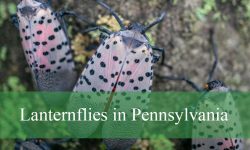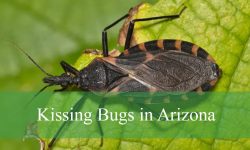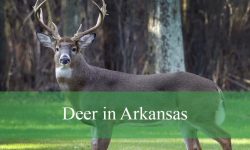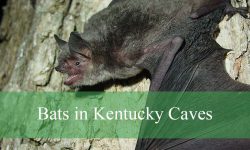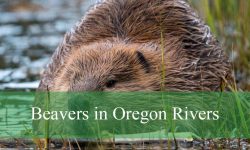Among the many species inhabiting Washington’s wetlands, dragonflies remain one of the most ancient and eye-catching groups. Their shimmering wings, hovering flight, and jewel-like colors attract attention wherever they appear. Many people admire dragonflies near lakes, marshes, and river edges without realizing just how complex their lives truly are.
Washington’s wetlands provide one of the richest environments for dragonflies. The state’s mix of coastal estuaries, freshwater marshes, forested bogs, and slow-moving rivers supports dozens of species that have adapted to different water conditions. These insects serve as predators, indicators of environmental health, and essential components of aquatic ecosystems.
This article uncovers what you didn’t know about dragonflies in Washington wetlands. Their hidden behaviors, unusual life cycle, impressive hunting skills, and ecological importance reveal a world far more captivating than their brief summer appearances suggest.
Understanding Dragonflies in Washington
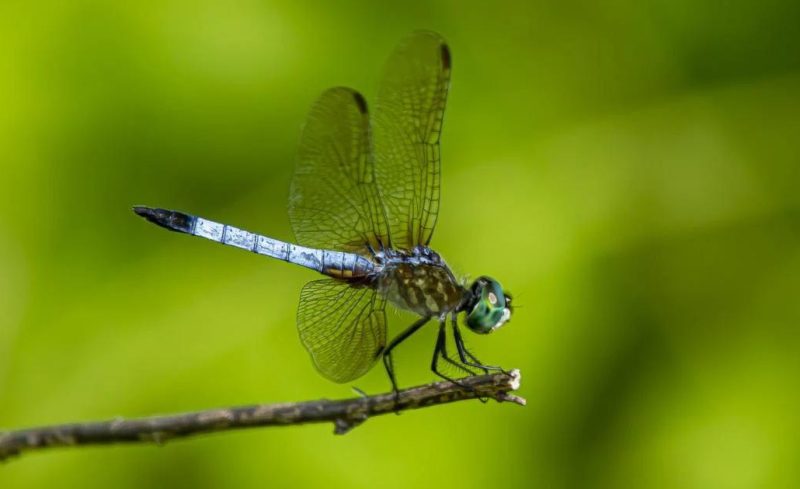
What Dragonflies Really Are
Dragonflies belong to the order Odonata, which also includes damselflies. Unlike damselflies, dragonflies hold their wings flat when resting and have larger bodies and powerful flight muscles. Their eyes dominate their heads which gives them exceptional vision.
Washington hosts numerous species including the eight spot skimmer, the cardinal meadowhawk, the blue dasher, and the Pacific forktail. Each species displays unique colors, patterns, and flight behaviors.
Why Washington Wetlands Are Ideal
Wetlands are essential because dragonflies require water for most of their life cycle. Washington’s combination of temperate climate, abundant freshwater, and diverse vegetation creates ideal conditions for egg laying, larval development, and adult hunting.
Wetlands also provide stable prey populations. Mosquitoes, flies, midges, and small aquatic creatures form the base of dragonfly diets.
Where Dragonflies Are Found
Dragonflies occur throughout Washington but are especially abundant in shallow wetlands, ponds, marsh edges, tidal flats, and wet meadows. They prefer areas with slow water movement and dense vegetation where their larvae can hunt and hide.
The Hidden Life Cycle of Dragonflies
Eggs
A female dragonfly lays hundreds or sometimes thousands of eggs. She attaches them to submerged plants or drops them into the water. Each egg contains a developing larva that begins life entirely underwater.
Aquatic Larvae
The larval stage known as a nymph lasts months or years depending on species. Nymphs are fierce predators. They feed on mosquito larvae, tadpoles, aquatic insects, and sometimes even small fish.
Nymphs possess extendable mouthparts that shoot forward to grab prey. Their ability to jet through water using internal pressure makes them surprisingly agile.
Emergence
When ready to transform, a nymph climbs a stem or rock and pulls itself from its old skin. The adult dragonfly emerges with soft wings that harden within hours. This emergence is one of the most dramatic transformations in Washington wetlands.
Adult Stage
Adults live only a few weeks to a few months. Their brief lifespan focuses on hunting, mating, and laying eggs.
Anatomy That Makes Dragonflies Extraordinary
Compound Eyes
Dragonflies have nearly 30,000 facets in each eye. These facets allow almost full panoramic vision. They detect movement instantly and track prey with remarkable precision.
Four Independent Wings
Dragonflies move each wing independently. This allows backward flight, hovering, vertical takeoff, and sudden direction changes. Their aerial agility makes them some of the world’s strongest insect fliers.
Powerful Mandibles
Adult dragonflies possess strong jaws capable of crushing prey instantly. Their bite is not harmful to humans but is devastating to small insects.
Dragonfly Behavior in Washington Wetlands
Aerial Territorial Battles
Male dragonflies defend territories that include sunny perches and patches of water. Battles involve high-speed chases, hovering face-offs, and sudden dives. Washington’s wetlands become battlegrounds during breeding season.
Sun Basking
Dragonflies regulate temperature through basking. They spread their wings or angle their bodies toward sunlight. This behavior is common in Washington’s cooler coastal areas.
Mating Flight Patterns
Mating involves aerial displays and unique clasping positions. Pairs sometimes fly together attached in a wheel formation. This complex behavior is often seen around wetland edges during summer.
Hunting Skills That Surprise Many People
Precision Predators
Dragonflies catch prey midair with near perfect accuracy. Studies show more than 90 percent success rates making them among the most efficient hunters in the animal kingdom.
Hovering Attacks
They hover in place while watching potential prey. When ready they dart forward with incredible speed. Their agility allows them to catch insects that most predators miss.
Feeding on Pest Insects
Dragonflies consume large numbers of mosquitoes and biting flies. Washington’s wetlands see fewer mosquito outbreaks in areas with strong dragonfly populations.
Dragonflies as Environmental Indicators
Water Quality
Dragonfly larvae cannot survive in polluted water. Their presence often indicates clean and healthy wetland conditions. When populations decline it may signal changes in water chemistry or habitat disturbance.
Climate Sensitivity
Dragonflies respond quickly to temperature shifts. Warming trends influence flight season timing and species distribution. Observing dragonflies helps scientists monitor climate-related changes.
Habitat Fragmentation
Some dragonfly species require specific wetland vegetation or water depth. Loss of wetlands affects their survival and reduces biodiversity.
Dragonfly Diversity Across Washington Regions
Coastal Wetlands
In tidal marshes and estuaries coastal species thrive in brackish water. The cool coastal climate influences their development speed.
Puget Sound Lowlands
Suburban ponds, restored wetlands, and nature parks provide strong habitat. Dragonflies in this region adapt well to human landscapes.
Eastern Washington
Lakes and river backwaters in the Columbia Basin support species that tolerate warmer temperatures. Dragonflies appear in large numbers during summer.
Mountain Wetlands
Alpine bogs and subalpine ponds host cold-tolerant species. These populations have shorter flight seasons because snowmelt timing determines emergence dates.
Hidden Interactions With Other Wildlife
Dragonflies and Birds
Swallows, kingfishers, and flycatchers feed on dragonflies. Their fast movements make them challenging prey but many birds specialize in catching them.
Frogs and Fish
Larval dragonflies coexist with amphibians and small fish. They may prey on tadpoles while fish sometimes prey on them.
Competition With Other Predators
Damselflies, water beetles, and predatory aquatic bugs compete for similar prey. Their interactions influence wetland food webs.
Dragonflies in Washington’s Cultural Landscape
Native Traditions
Indigenous communities in the Pacific Northwest recognized dragonflies as symbols of agility and transformation. Some tribes viewed them as harbingers of good water conditions.
Photography and Birdwatching
Dragonflies attract nature photographers who appreciate their colors and flight. Birdwatchers often observe dragonflies while searching for wetland birds.
Ecotourism
Healthy wetlands filled with dragonflies support wildlife viewing and outdoor recreation which indirectly benefits local economies.
Myths and Misconceptions About Dragonflies
Myth: Dragonflies Sting
Dragonflies cannot sting. They have no stinger or venom.
Myth: Dragonflies Sew People’s Lips Shut
This old myth has no basis in reality. Dragonflies pose no harm to humans.
Myth: Dragonflies Are Rare
They are common in Washington though hidden in vegetation.
Myth: Dragonflies Eat Bees Exclusively
They eat a wide variety of insects not just pollinators.
Threats to Dragonflies in Washington Wetlands
Wetland Loss
Urban development and agriculture reduce wetland acreage. Fewer wetlands mean fewer egg-laying sites and larval habitats.
Pollution
Water contamination from pesticides or runoff harms larvae. Poor water quality reduces survival rates.
Invasive Species
Non-native fish and plants alter food webs. These changes affect dragonfly reproduction and larval success.
Climate Variation
Changing precipitation patterns alter water levels. Unpredictable water conditions challenge species dependent on stable habitats.
Conservation Efforts in Washington
Wetland Protection
State agencies and conservation groups work to preserve and restore wetlands. Protected areas ensure stable habitats for dragonflies.
Water Quality Initiatives
Pollution control programs help maintain suitable conditions for larvae. Healthy wetlands support diverse dragonfly populations.
Public Education
Outreach programs encourage residents to appreciate dragonflies. Awareness helps reduce fear and increases support for conservation.
How Residents Can Help Dragonflies
Create Backyard Habitats
Small ponds with native plants attract dragonflies. Avoiding fish in backyard ponds increases larval survival.
Reduce Pesticide Use
Limiting chemicals protects both adult dragonflies and aquatic larvae.
Support Wetland Restoration
Volunteering or donating to restoration projects helps maintain essential habitats.
Daily Life of Dragonflies in Washington Wetlands
Morning Warm Up
Dragonflies begin the day by warming their wings. Sun exposure increases muscle efficiency.
Midday Hunting
During warm hours dragonflies hunt vigorously. Activity peaks in early afternoon.
Evening Rest
As temperatures drop dragonflies settle on reeds or branches. Some species continue brief twilight flights before darkness.
FAQs About Dragonflies in Washington Wetlands
Are dragonflies dangerous
No. They do not attack humans.
When is dragonfly season in Washington
Most appear from late spring through early fall.
Do dragonflies eat mosquitoes
Yes. They consume many mosquito species.
What do dragonfly larvae eat
They eat tadpoles, aquatic insects, and mosquito larvae.
Do dragonflies live long
Adults live weeks to months though larvae may live years.
Where can I see dragonflies
Wetlands, ponds, marshes, and river edges across Washington.
Why are dragonflies colorful
Colors signal species identity and aid in mate attraction.
Do dragonflies migrate
Some species migrate regionally in response to temperature changes.
How do dragonflies hunt
They capture prey midair with exceptional accuracy.
Are dragonflies good for ecosystems
Yes. They help control pests and indicate healthy water systems.
Conclusion
Dragonflies in Washington wetlands reveal a world of precision flight, complex life cycles, and ecological importance. Their presence reflects clean water, thriving vegetation, and balanced ecosystems. These remarkable insects show intelligence and agility rarely seen in other invertebrates.
Understanding their hidden behaviors and roles helps deepen appreciation for wetlands across the state. Protecting these environments ensures that future generations will continue to witness dragonflies darting across ponds, glowing in sunlight, and adding life to Washington’s natural landscapes.


